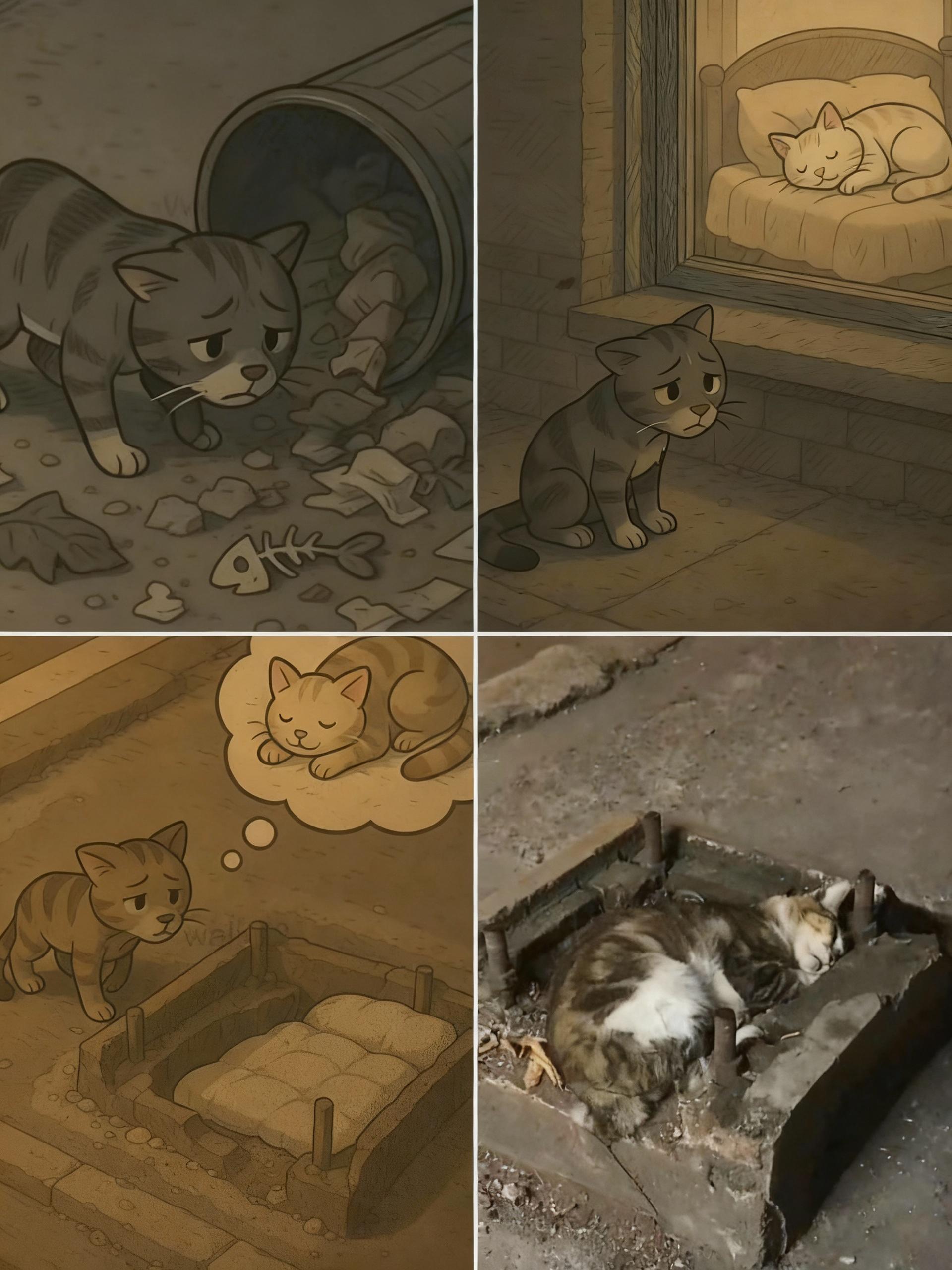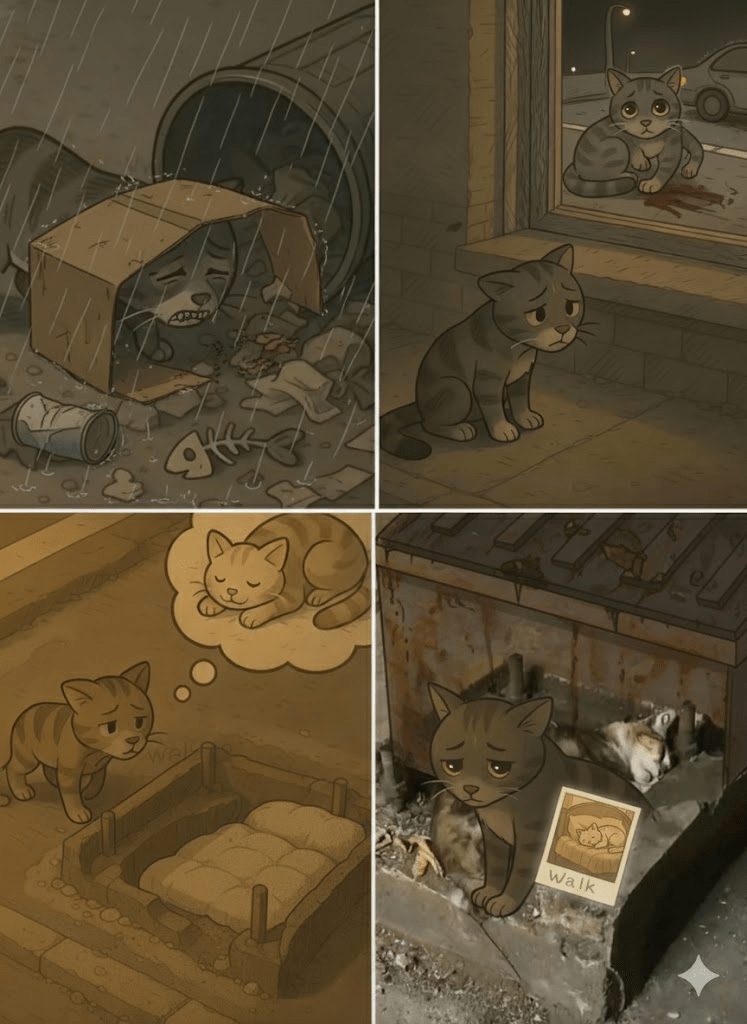The world we inhabit is a complex tapestry of lives, interwoven with moments of joy, sorrow, comfort, and struggle. For many, a warm meal, a soft bed, and the security of a loving home are a given. Yet, beneath the veneer of this everyday reality, another world exists—a world often overlooked, yet brimming with silent suffering. This is the world of stray animals, creatures who navigate a harsh landscape of hunger, cold, and loneliness, their dreams of comfort often starkly contrasting with their grim realities. The image before us serves as a poignant window into this unseen struggle, a visual narrative that speaks volumes without uttering a single word. It depicts a small, forlorn cat, its eyes wide with a mixture of sadness and longing, standing next to an overturned bin, a skeletal fishbone hinting at its desperate search for sustenance. In another frame, the same cat gazes longingly through a window, its silhouette a stark contrast to the cozy scene of a well-fed feline slumbering peacefully within. A subsequent panel illustrates the depth of its yearning, as the stray dreams of a soft bed, a comfort it may never know. The final, heartbreaking image grounds this narrative in a stark reality: a real-life stray, curled up in a makeshift, cold shelter, its vulnerability palpable. This juxtaposition of imagined comfort and stark reality is not merely a story of one cat; it is a universal tale, a mirror reflecting the lives of countless animals who live on the fringes of our society, their existence a constant testament to resilience in the face of adversity. This article delves into the various facets of this issue, from the root causes of animal abandonment to the profound impact on these creatures, and crucially, what steps we, as a compassionate society, can take to alleviate their plight.

The plight of stray animals is a multifaceted issue, with its roots deeply embedded in a combination of societal factors and individual responsibilities. One of the primary drivers of the stray animal population is irresponsible pet ownership. This often manifests in a lack of spaying or neutering, leading to uncontrolled breeding and an exponential increase in the number of homeless animals. Owners who fail to microchip their pets or provide adequate identification also contribute to the problem, as lost animals are less likely to be reunited with their families and often end up on the streets. Furthermore, economic hardship can sometimes force families to make the difficult decision to abandon their pets, believing it to be their only option when faced with insurmountable financial burdens. Unforeseen circumstances such as relocation, allergies within the family, or simply a lack of understanding about the commitment involved in pet ownership also contribute to the heartbreaking phenomenon of animal abandonment. This cycle perpetuates, as these abandoned animals, if not rescued, often reproduce, leading to even more strays struggling to survive. The absence of comprehensive and accessible animal welfare education further exacerbates the problem, leaving many pet owners unaware of the critical role they play in preventing animal homelessness.

Survival on the streets is a constant battle for stray animals, a relentless struggle against hunger, thirst, and the elements. The search for food is a daily ordeal, often involving scavenging through trash cans, competing with other strays, or relying on the kindness of strangers. Water sources are scarce, especially in urban environments, leading to chronic dehydration. Beyond these basic necessities, strays face a myriad of threats, from harsh weather conditions—blistering heat, freezing cold, and torrential rain—to traffic accidents, which are a leading cause of injury and death. They are also vulnerable to diseases, parasites, and untreated injuries, with no access to veterinary care. The constant fear and stress of living on the streets take a heavy toll on their physical and mental well-being, often leading to a shortened lifespan. The image of the forlorn cat gazing at a warm home underscores the emotional impact of this existence, highlighting the deep-seated yearning for safety, warmth, and companionship that these animals undoubtedly experience. Their dreams of comfort and security are a poignant reminder of what they are missing.

To generate the next part of the article and images, please continue.






